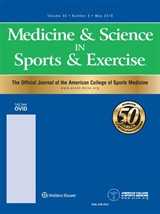 Waanders JB, Hortobágyi T, Murgia A, DeVita P, Franz JR. Advanced age redistributes positive but not negative leg joint work during walking. Medicine & Science in Sports & Exercise (In press).
Waanders JB, Hortobágyi T, Murgia A, DeVita P, Franz JR. Advanced age redistributes positive but not negative leg joint work during walking. Medicine & Science in Sports & Exercise (In press).
Abstract.
Introduction: Advanced age brings a distal-to-proximal redistribution of positive joint work during walking that is relevant to walking performance and economy. It is unclear whether negative joint work is similarly redistributed in old age. Negative work can affect positive work through elastic energy return in gait. We determined the effects of age, walking speed, and grade on positive and negative joint work in young and older adults.
Methods: Bilateral ground reaction force and marker data were collected from healthy young (age 22.5 years, n=18) and older (age 76.0 years, n=22) adults walking on a split-belt instrumented treadmill at 1.1, 1.4, and 1.7 m/s at each of three grades (0, 10, and -10%). Subjects also performed maximal voluntary eccentric, isometric, and concentric contractions for the knee extensors (120, 90, 0°/s) and plantarflexors (90, 30, 0°/s).
Results: Compared to young adults, older adults exhibited a distal-to-proximal redistribution of positive leg joint work during level (p<0.001) and uphill (p<0.001) walking, with larger differences at faster walking speeds. However, the distribution of negative joint work was unaffected by age during level (p=0.150) and downhill (p=0.350) walking. Finally, the age-related loss of maximal voluntary knee extensor (p<0.001) and plantarflexor (p=0.001) strength was lower during an eccentric contraction vs. concentric contraction for the knee extensors (p<0.001) but not for the plantarflexors (p=0.320).
Conclusion: The distal-to-proximal redistribution of positive joint work during level and uphill walking is absent for negative joint work during level and downhill walking. Exercise prescription should focus on improving ankle muscle function while preserving knee muscle function in older adults trying to maintain their independence.
